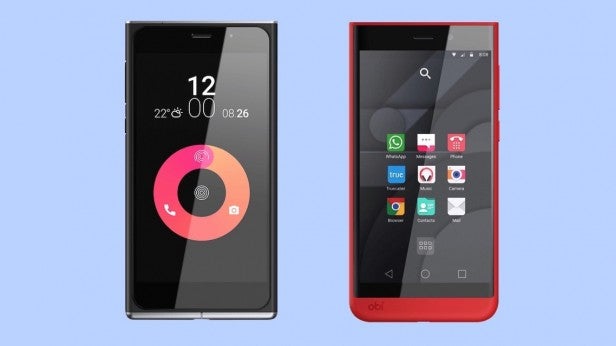Going it alone: 5 phone brands built by former employees of Apple, Google and HTC

Building a smartphone brand is hard work, so it’s always good to have a few people on board who know how it all works. Here’s four companies featuring former employees from some of the biggest phone companies hoping to take on their former employers.
The smartphone market may be dominated by Apple, Samsung, LG, and other established giants of the field, but such companies no longer have that field to themselves.
There’s a growing trend for staff from those aforementioned companies to branch off on their own and form smaller, hungrier, more agile manufacturing startups.
Such companies together are providing a new alternative to the big brands – one where ‘cheap’ is no longer automatically followed by ‘nasty,’ and where words like ‘premium’ and ‘flagship’ aren’t the sole preserve of the mega-corporations.
Here are a few examples of upcoming smartphone manufacturers with experience earned at the major brands.
Related: Best Android phones

Nextbit
Nextbit is a young phone maker that’s set to announce its first ever smartphone on September 1.
The reason that the company is attracting considerable buzz in the industry is because of the management team behind it. Company co-founders Tom Moss and Mike Chan both worked on Android during the Google OS’s early days, while Chan also spent a few months at Apple.
Equally excitingly, Nextbit’s chief product officer Scott Croyle used to head up design at HTC during the time of the HTC One M7 and HTC One M8 – two of the most beautiful phones of recent years. Whatever Nextbit has planned, you can be sure it’ll look the part.
Running contrary to longstanding smartphone trends, Nextbit’s first phone will apparently “perform better over time and function at a higher level” through a clever (if mysterious) cloud-based software enhancement.
We can’t wait to see it.

Obi
Unveiled by former Apple CEO John Sculley, this pair of phones the Obi Worldphone SF1 and SJ1.5 certainly have a distinctive design, which you don’t always get from entry-level
smartphones. Both are well specced too, with the higher-end model packing a 1080p display, Snapdragon 615 CPU and either 2/3GB of RAM depending on your storage option.
Sculley was the former Apple CEO who ousted Steve Jobs from the company way back in 1985, so we’re sure they’ll be a lot of eyes on his latest venture. Especially considering how influential Jobs and Apple became in the mobile space.
Related: OnePlus 2 tips and tricks

Jolla
If you’ve been a fan of mobile phones since before they went smart (or at least since before the arrival of the iPhone in 2007), you’ll probably have a major soft spot for Nokia.
The Finnish company’s hardware arm may have been subsumed by Microsoft fairly recently, but to many fans the old Nokia died when it gave up on the idea of running its own software platform in 2011.
Later that same year, some Nokia staff members opted to leave the company (with Nokia’s blessing and backing) and set up Jolla. This new company would make its own smartphones running on a new OS derived from MeeGo – essentially Nokia’s last OS before it switched to Windows Phone.
In 2013, Jolla launched its first smartphone running on the MeeGo-derived Sailfish OS and its Jolla tablet is now available to pre-order.
In July 2015, Jolla announced that it would be focusing on the software side of things, with the intention of licensing the gesture-based Sailfish OS out to manufacturers.
To that end, the company’s hardware efforts have been spun out into a separate company, so dreams of another Jolla phone aren’t quite dead yet.
Related: Best Phones

Kazam
Kazam was established in May 2013 by Michael Coombes and James Atkins, both of whom used to head up HTC’s UK sales and marketing teams respectively.
Atkins also had a spell working for LG, while Coombes has a senior sales role with Nokia on his CV.
The company turns out affordable smartphones running on both Android and Windows Phone – an unusual dual-approach in these Android-dominated, pre-Windows 10 Mobile times.
Talking of which, Kazam has already pledged its support for Microsoft’s next (and possibly last) crack at the smartphone market. Its hard-earned relationship with Redmond could see it well placed should Windows 10 Mobile really take off.
From the devices we’ve covered on TrustedReviews (most recently the Kazam Tornado 455L and the Kazam Thunder 450W), the onus seems to be on borrowing certain features and design elements of popular smartphones from established manufacturers, but placing them in a lower cost package.
Seems smart enough to us.
Related: iPhone 6 vs Samsung Galaxy S6 in-depth comparison

OnePlus
Undoubtedly
the most famous and successful of these startup manufacturers is
OnePlus, which rapidly set the template for the others to follow with
the breakout hit that was 2014’s OnePlus One.
The Chinese company
has made a real impact with its extreme focus on slim profit margins
through a novel (albeit deeply frustrating) invite system and a complete
lack of traditional advertising. The latest and best result of this is
the OnePlus 2, a classy flagship phone with a scarcely believable price tag and an irresistable air of exclusivity.
It’s easy to forget that OnePlus as a company has its origins in a decidedly more traditional Chinese manufacturer.
Company
founders Pete Lau and Carl Pei used to work for Oppo. Indeed, as far as
anyone can tell, Oppo holds the single largest stake in OnePlus,
leading many to conclude that the brand is effectively a cool,
experimental subsidiary of one of China’s big electronics company.


